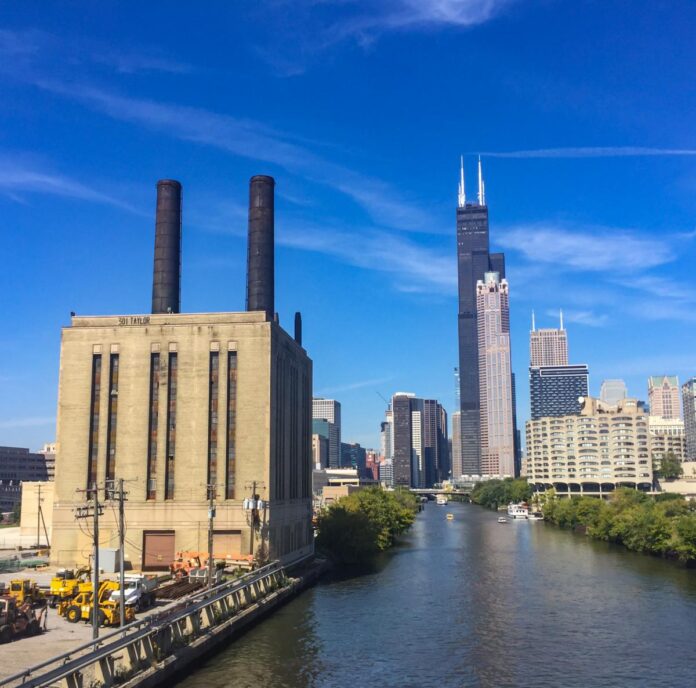


Historic Chicago Union Station Power House . AVAILABLE for adaptive reuse as data center, chilling plant or other use. Not formally listed for sale, so unique opportunity to add value.
The Opportunity:
Available for adaptive reuse as a data center, chilling center or other use, the Union Station Power House by one of Chicago’s greatest architectural firms is in close proximity to central business district. Amtrak has plans to demolish the building at an estimated cost of $13 million and replace it with a surface parking lot. Not formally listed for sale, ANY purchase offer would save Amtrak millions of dollars. Opportunity for a variety of development funds.
Benefits:
• Solid masonry fireproof building
• Zoned: DS-5
• Height: 115’
• Footprint: 9,000 sf (95’x95’)
• Potential square footage: 100,000
• Central Location Close to Central Business District, Loop and South Loop
• Close proximity to exchanges, financial district and tech firms
• Proximity to fiber optic trunk lines
• Adjacent to Chicago River for low-cost cooling plant option
• Adjacent to ComEd electric substation
Potential Eligibility:
• 20% Federal Tax Credits
• Illinois Historic Tax Credits
• Adopt-a-Landmark Funds
• Class L Tax Designation
• Permit fee waivers
301 W. Taylor Street, Chicago Illinois By Graham, Anderson, Probst & White in 1932
For more information, please contact Ward Miller Executive Director, Preservation Chicago, 773-398-6432
History:
Visible from the Roosevelt Road Bridge, the iconic and austere Chicago Union Station Power House, with its streamlined Art Moderne facades and smokestacks, exemplifies the story of Chicago’s growth as a railroad and transportation center beginning in the pioneering days of the 1850s. The Union Station Power House is part of a network of buildings, systems, and rail tracks constructed in the 1920s by the architectural firm of Graham, Anderson, Probst & White, which included Chicago’s Union Station, it’s Great Hall and Grand Waiting Room, along with the separate Concourse Building. The Chicago Union Station Power House has been out of service since 2011, is currently mothballed, and is being considered for demolition. When designed in 1931, it was referred to as the “boiler plant.”
The architects of the Union Station Power House were Graham, Anderson, Probst and White, a firm that descended from the architectural firm of Daniel Burnham. They designed many of Chicago’s most iconic buildings, including the Wrigley Building, the Field Building (both Chicago Landmarks), the Merchandise Mart, and many other notable structures, both in Chicago and across the United States.
The strong verticality of the Power House, from its linear groupings of parallel window bands to its tall chimneys, emphasize the building’s strength. Its massive cream-colored brick walls, horizontal stone banding and austere ornament create additional visual impact. Unique in form, this is a rare example of power house industrial design by Graham, Anderson, Probst & White.
Amtrak is the current owner of the building and has determined that this structure may no longer be necessary for its operations. Therefore, they are conducting federally mandated “Section 106 Hearings,” to determine if it may be eligible for listing on the National Register of Historic Places. However, these hearings do not rule out demolition of the structure in the future. Demolition would be an expensive option, costing millions of dollars of taxpayer funds, to create a paved asphalt parking lot adjoining the Chicago River.
Preservation Chicago recognizes the limitations of the site, with railroad tracks to the west and the South Branch of the Chicago River to the east. However, we would encourage a clever adaptive reuse of the building and site by either another service utility, like the nearby ComEd facilities, or another user. The idea of a third-party use could stimulate long-range plans for addressing the riverfront along this stretch of the South Branch and could catalyze the creation of riverfront access, riverfront green space and perhaps even a future riverwalk. This would serve as an amenity for the many nearby residents and commercial enterprises.
We believe that the Union Station Power House’s connection to Chicago’s incredible railroad and architectural history makes it a prime candidate for a Chicago Landmark Designation. A Chicago Landmark designation for this unique building would ensure its preservation and reuse. A preservation outcome for this building would be a win-win for Chicago, Amtrak Rail Systems, and future generations of Chicagoans.


